Lung Cancer Awareness – Learn Causes, Signs & Symptoms
Following are the Lung Cancer Awareness – Learn Causes, Signs & Symptoms etc.
- Lung cancer is the prime cause of deaths in both men and women globally.
- Cigarette smoking is the most significant cause for the advancement of lung cancer.
- Passive smoking also can cause lung cancer.
- There are two types of lung cancer, small cell lung cancers (SCLC) and non-small cell lung cancers (NSCLC) which grow and spread differently.
- Bone pain
- Chest pain
- Swelling of the face, arms or neck
- Headaches, dizziness or limbs that become weak or numb
- Jaundice
- Lumps in the neck or collar bone region
Other Locations:
Nerul-Seawoods, Mumbai:
Shop No 18 & 19, Ground Floor Giriraj Housing Society Ltd Plot No 7 & 8, Sector 44, Palm Beach Road Nerul – Seawoods (West), Navi Mumbai – 400706
Kalyan, Mumbai:
Ground Floor, Mohan Plaza-II, Sr. No-3 Hissa No-1, Near Potdar International School, Khadakpada Wayle Nagar, Kalyan (w) Pincode – 421301
Kalyani Nagar, Pune:
Ground Floor, B1 Building, Cerebrum IT Park, Behind Marigold Society, Kalyani Nagar, Pune 411014
Chinchwad, Pune:
Shop no 18/19/20, L3 Building, Empire Estate, Chinchwad, Pune – 411019
Satara Road, Pune:
Shop No – 110 – 111, Pentagon Building, Shahu College Road, Next to Kaka Halwai, Satara Road, Pune – 411009
Magarpatta A Wing, Pune:
S -10, 2nd Floor, A – wing Destination Centre, Magarpatta, Hadapsar, Pune – 411013
Pimple Saudagar, Pune:
Shop No-203, 2nd Floor, Rainbow Plaza, Near Shivar Garden Chowk, Pimple Saudagar, Pune – 411057
Viman Nagar, Pune:
Row House No-2, Plot No – 88, Wing F, Nitron Landmark, Vimannagar, Pune-14
FC Road, Pune:
Shop No 9 to 13, Ground Floor, Mantri House, Next to Kotak Mahindra Bank, Fergusson College Road, Dnyaneshwar Paduka Chowk, Shivaji Nagar, Pune – 411005
Lajpat Nagar, Delhi:
C-11, Lajpat Nagar- III, New Delhi – 110024
Gurgaon, Gurgaon:
SCO-58, Sector-56, HUDA Shopping Centre, Gurgaon – 122002 ( Near MORE Store)
Dwarka, Delhi:
Plot No.9, First Floor, Opp.IGL Gas Station, Sector-12A, Dwarka -110075
Punjabi Bagh, Delhi:
Basement, 14, West Avenue Road, West Punjabi Bagh, Punjabi Bagh, Delhi – 110026
Rohini, Delhi:
E 1/13, Sector-7, Opposite M2K Mall, Rohini, New Delhi – 110085
Noida, Noida:
C-60, Sector-2 Main Road, Gautam Budh Nagar, Noida (UP) – 201301
Indirapuram, Ghaziabad:
403, Nitikhand 2 Near Swarn Jayanti Park , Opposite Bihari Market & Krishna Vista Gate No.3, Indirapuram , Ghaziabad UP-201014.
Faridabad, Faridabad:
1D, BP Hardware Chowk, Faridabad. PIN – 121001
HSR Layout, Bengaluru:
No #. 244, 17Th Cross, 7th Sector, Near BDA Complex, Opposite vasan eye & dental care hospital, HSR Layout, Bengaluru – 560102
Koramangala, Bengaluru:
Plot No 137, Ground Floor, 5th Block, JNC Road, Koramangala, Bengaluru – 560095
Marathahalli, Bengaluru:
UB ELEGA, No Marathali, 90, Outer Ring Rd, Jyothi Puram, Kartik Nagar, Marathahalli, Bengaluru – 560037
Kalyan Nagar, Bengaluru:
#803,Ground Floor, SS Comforts, 2nd Cross, HRBR Layout, 1st Block, Kalyan Nagar, Bengaluru – 560043
Hyderabad, Telangana
Konda Pride, Plot No, 1299c, 2 Floor, Rd Number 1, Near IOC Petrol Pump, Jubilee Hills, Hyderabad, Telangana 500033
Nashik
Shop No 8, Punyasmruti Apt, Opp to Body Master Gym, B Road, Behind Water tank, Nashik 422007
Bhopal
C-39 Padmanabh Nagar, Raisen Road, Bhopal. Madhya Pradesh- 462023
Lung Cancer Awareness – Learn Causes, Signs & Symptoms
How common is lung cancer?
Lung cancer is a disease mostly found in elderly; almost 70% of people diagnosed with lung cancer are over 65 years of age, while less than 3% of lung cancers occur in people under 45 years of age. The median age at diagnosis is 70 years. Lung Cancer awareness is more important in the elderly.
Lung Cancer Awareness – Learn Causes, Signs & Symptoms
Causes for Lung Cancer
Smoking: The rate of lung disease is vigorously connected with cigarette smoking, with around 90% of lung cancer emerging because of using tobacco. Lung Cancer aAwareness is much more important in chain-smokers.
Passive smoking: Passive smoking or the inhalation of tobacco smoke by non-smokers, who share living or working quarters with smokers, also is an established risk factor for the development of lung cancer. Research has shown that nonsmokers who reside with a smoker have a 24% increase in risk for developing lung cancer when compared with nonsmokers who do not reside with a smoker.
Exposure to asbestos fibers: Asbestos fibers are silicate fibers that can persist for a lifetime in lung tissue following exposure to asbestos. The workplace was a common source of exposure to asbestos fibers, as asbestos was widely used in the past as both thermal and acoustic insulation.
Exposure to radon gas: Radon gas is a natural radioactive gas that is a natural decay product of uranium that emits a type of ionizing radiation. Radon gas is a known cause of lung cancer, with an estimated 12% of lung-cancer deaths attributable to radon gas.
Familial predisposition: While the majority of lung cancers are associated with tobacco smoking, the fact that not all smokers eventually develop lung cancer suggests that other factors, such as individual genetic susceptibility, may play a role in the causation of lung cancer. Numerous studies have shown that lung cancer is more likely to occur in both smoking and nonsmoking relatives of those who have had lung cancer than in the general population.
Lung diseases: The presence of certain diseases of the lung like chronic obstructive pulmonary disease (COPD), pulmonary fibrosis (scarring of the lung) is associated with an increased risk for the development of lung cancer even after the effects of concomitant cigarette smoking are excluded.
Prior history of lung cancer: Survivors of lung cancer have a greater risk of developing a second lung cancer than the general population has of developing a first lung cancer. Survivors of non-small cell lung cancers have an additive risk of 1%-2% per year for developing a second lung cancer. In survivors of small cell lung cancers, the risk for development of second lung cancers approaches 6% per year.
Air pollution: Air pollution from vehicles, industry, and power plants can raise the likelihood of developing lung cancer in exposed individuals. Up to 1%-2% of lung cancer deaths are attributable to breathing polluted air, and experts believe that prolonged exposure to highly polluted air can carry a risk for the development of lung cancer similar to that of passive smoking.
Exposure to diesel exhaust: Exhaust from diesel engines is made up of gases and soot. Many occupations, such as truck drivers, toll booth workers, forklift and other heavy machinery operators, railroad and dock workers, miners, garage workers and mechanics are frequently exposed to diesel exhaust. Lung cancer awareness in those people is important. Studies of workers exposed to diesel exhaust have shown a small but significant increase in the risk of developing lung cancer.
Lung Cancer Awareness – Learn Causes, Signs & Symptoms
Signs and symptoms of lung cancer
The symptoms do not necessarily mean cancer, but don’t ignore if they persist for longer time.
- Coughing
- Coughing up blood
- Shortness of Breath
- Loss of appetite
- Fatigue
- Recurring infections
- Bone pain
- Chest pain
- Swelling of the face, arms or neck
- Headaches, dizziness or limbs that become weak or numb
- Jaundice
- Lumps in the neck or collar bone region
Lung Cancer Diagnosis
Your doctor may suspect lung cancer if a routine physical exam reveals:
- Swollen lymph nodes above the collarbone
- Weak breathing
- Abnormal sounds in the lungs
- Dullness when the chest is tapped
- Unequal pupils
- Droopy eyelids
- Weakness in one arm
- Expanded veins in the arms, chest, or neck
- Swelling of the face
Doctors use a wide range of diagnostic procedures and tests to diagnose lung cancer. These include the following:
- Chest X-ray
- CT scans
- Low-dose helical CT scan (or spiral CT scan)
- Magnetic resonance imaging (MRI)
- Positron emission tomography (PET)
- Bone scans
- Sputum cytology
- Bronchoscopy
- Needle biopsy
- Thoracentesis
- Molecular testing
-
Sale!

Executive Health Check Up
₹ 1,999.00 ADD TO CART -
Sale!
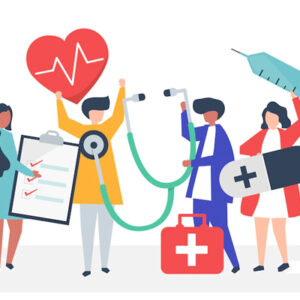
Express Health Check Up
₹ 4,699.00 ADD TO CART -
Sale!
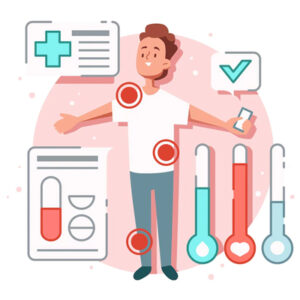
Full Body Check Up
₹ 6,999.00 ADD TO CART -
Sale!
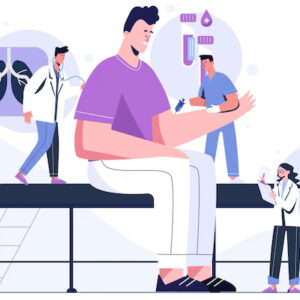
Master Health Check Up
₹ 2,999.00 ADD TO CART -
Sale!
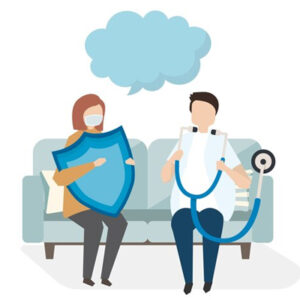
Preventive Health Check Up
₹ 999.00 ADD TO CART -
Sale!
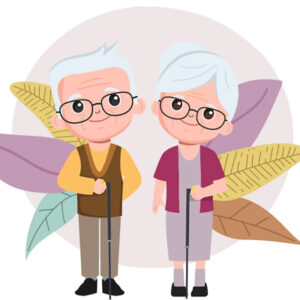
Senior Citizen Health Check Up
₹ 3,599.00 ADD TO CART -
Sale!

Smart Women Package
₹ 3,999.00 ADD TO CART
Lung Cancer Awareness – Learn Causes, Signs & Symptoms
Lung Cancer Awareness & Treatments
Surgery: Surgical removal of the tumor is generally performed for limited-stage (stage I or sometimes stage II) NSCLC and is the treatment of choice for cancer that has not spread beyond the lung. About 10%-35% of lung cancers can be removed surgically, but removal does not always result in a cure, since the tumors may already have spread and can recur at a later time.
Radiation: Radiation therapy may be employed as a treatment for both NSCLC and SCLC. Radiation therapy uses high-energy X-rays or other types of radiation to kill dividing cancer cells. Radiation therapy may be given as curative therapy, palliative therapy (using lower doses of radiation than with curative therapy), or as adjuvant therapy in combination with surgery or chemotherapy. Radiation therapy generally only shrinks a tumor or limits its growth when given as a sole therapy, yet in 10%-15% of people it leads to long-term remission and palliation of the cancer.
Chemotherapy: Both NSCLC and SCLC may be treated with chemotherapy. Chemotherapy refers to the administration of drugs that stop the growth of cancer cells by killing them or preventing them from dividing. Chemotherapy may be given alone, as an adjuvant to surgical therapy, or in combination with radiotherapy.
Targeted therapy: Molecularly targeted therapy involves the administration of drugs that have been identified to work in subsets of patients whose tumors have specific genetic changes that promote tumor growth.
Immunotherapy: Immunotherapy may be an effective option for some patients with advanced lung cancers. Immunotherapy drugs work by strengthening the activity of the immune system against tumor cells.
Radiofrequency ablation (RFA): Radiofrequency ablation is being studied as an alternative to surgery, particularly in cases of early stage lung cancer. In this type of treatment, a needle is inserted through the skin into the cancer, usually under guidance by CT scanning. Radiofrequency (electrical) energy is then transmitted to the tip of the needle where it produces heat in the tissues, killing the cancerous tissue and closing small blood vessels that supply the cancer.
Lung Cancer Awareness & Prevention
- Don’t smoke
- Avoid secondhand smoke
- Test your home for radon
- Avoid carcinogens at work
- Eat a diet full of fruits and vegetables
- Exercise most days of the week
Different Healthcare Packages @Express Clinics:
Smart Women Packages (72 Parameters) MRP 8,800 Discounted rate @3999/-
Senior Citizen Health Check Up (70 Parameters) MRP 9,800 Discounted rate @ 3,599/-
Preventive Health Check Up (63 Parameters) MRP 2,720 Discounted rate @999/-
Master Health Check Up (71 Parameters) MRP 7,070 Discounted rate @2,999/-
Full Body Check Up (96 Parameters) MRP 18,335 Discounted rate @ 6,999/-
Express Health Check Up (88 Parameters) MRP 11,760 Discounted rate @ 4,699/-
Executive Health Check Up (71 Parameters) MRP 4,940 Discounted rate @1999/-

